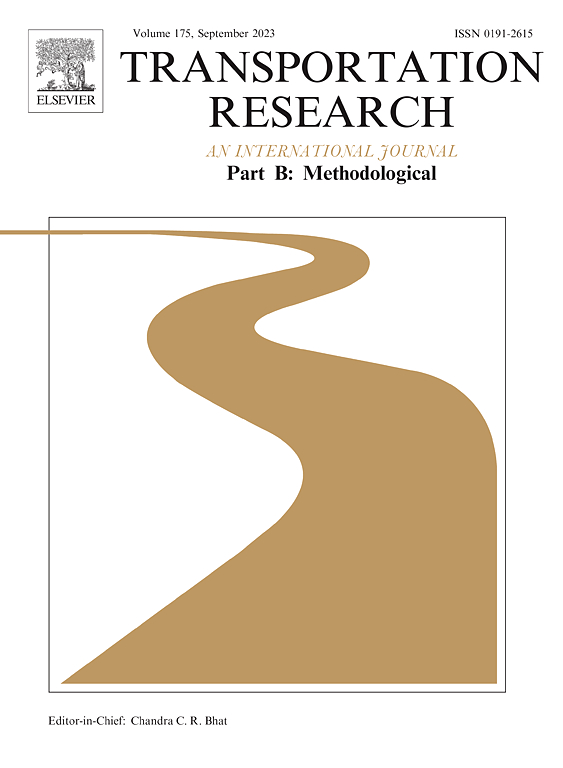具有共享自动驾驶车辆和停车空间约束的通勤系统停车预约方案
IF 5.8
1区 工程技术
Q1 ECONOMICS
引用次数: 0
摘要
本研究考察了在一个由普通车辆(rv)和共享自动驾驶汽车(sav)组成的通勤系统中,当停车位有限时,停车预订方案对出行选择和流量分布的影响。探讨了三种停车预留方案下的所有可能的出发模式,包括无预留和预留RV通勤者,以及SAV通勤者。分析了相关因素,如车位数量、未预留车位数量和额外的SAV成本。这些因素对各种指标的影响,包括模式分裂、SAV市场份额、交通拥堵、个人旅行成本和系统性能,进行了调查。分析表明,对车位数量和无预留车位数量进行管理可以降低个人出行成本,缓解交通拥堵。此外,研究还提出了一种考虑车位数量和空位比例以及自动驾驶汽车额外成本的最优预留方案,以使总出行成本最小化,并使系统效率最大化。这些发现可能会影响未来的城市交通停车政策,以适应常规车辆和自动驾驶车辆的混合交通。本文章由计算机程序翻译,如有差异,请以英文原文为准。
Parking reservation scheme in a commuting system with shared autonomous vehicles and parking space constraint
This study examines the effects of parking reservation schemes on travel choices and flow distribution in a commuting system comprising regular vehicles (RVs) and shared autonomous vehicles (SAVs), when faced with limited parking spaces. All possible departure patterns under three parking reservation schemes are explored, involving unreserved and reserved RV commuters, as well as SAV commuters. Associated factors, such as the number of parking slots, the number of unreserved slots, and the additional SAV cost, are analyzed. The impacts of these factors on various metrics, including modal split, SAV market share, traffic congestion, individual travel cost, and system performance, are investigated. Analytical analysis reveals that managing the numbers of parking slots and unreserved parking slots can reduce individual travel cost and alleviate traffic congestion. Additionally, the study suggests an optimal reservation scheme for the number of parking slots and the ratio of unreserved slots, along with the additional SAV cost, to minimize total travel cost and maximize system efficiency. These findings could shape future urban mobility parking policies, accommodating mixed traffic of regular and autonomous vehicles.
求助全文
通过发布文献求助,成功后即可免费获取论文全文。
去求助
来源期刊
CiteScore
12.40
自引率
8.80%
发文量
143
审稿时长
14.1 weeks
期刊介绍:
Transportation Research: Part B publishes papers on all methodological aspects of the subject, particularly those that require mathematical analysis. The general theme of the journal is the development and solution of problems that are adequately motivated to deal with important aspects of the design and/or analysis of transportation systems. Areas covered include: traffic flow; design and analysis of transportation networks; control and scheduling; optimization; queuing theory; logistics; supply chains; development and application of statistical, econometric and mathematical models to address transportation problems; cost models; pricing and/or investment; traveler or shipper behavior; cost-benefit methodologies.

 求助内容:
求助内容: 应助结果提醒方式:
应助结果提醒方式:


